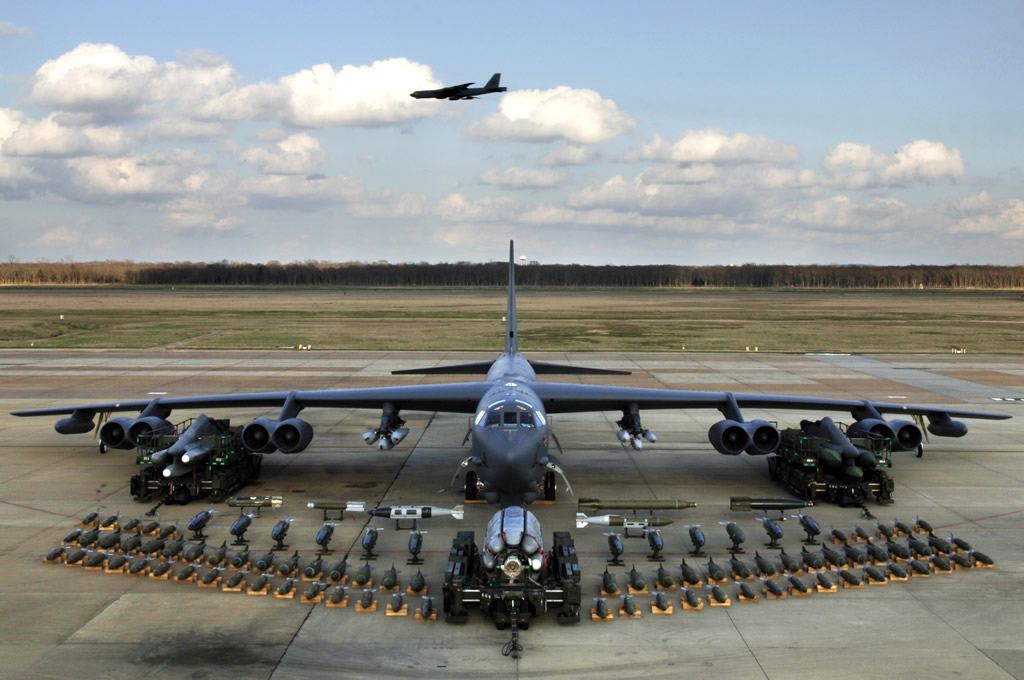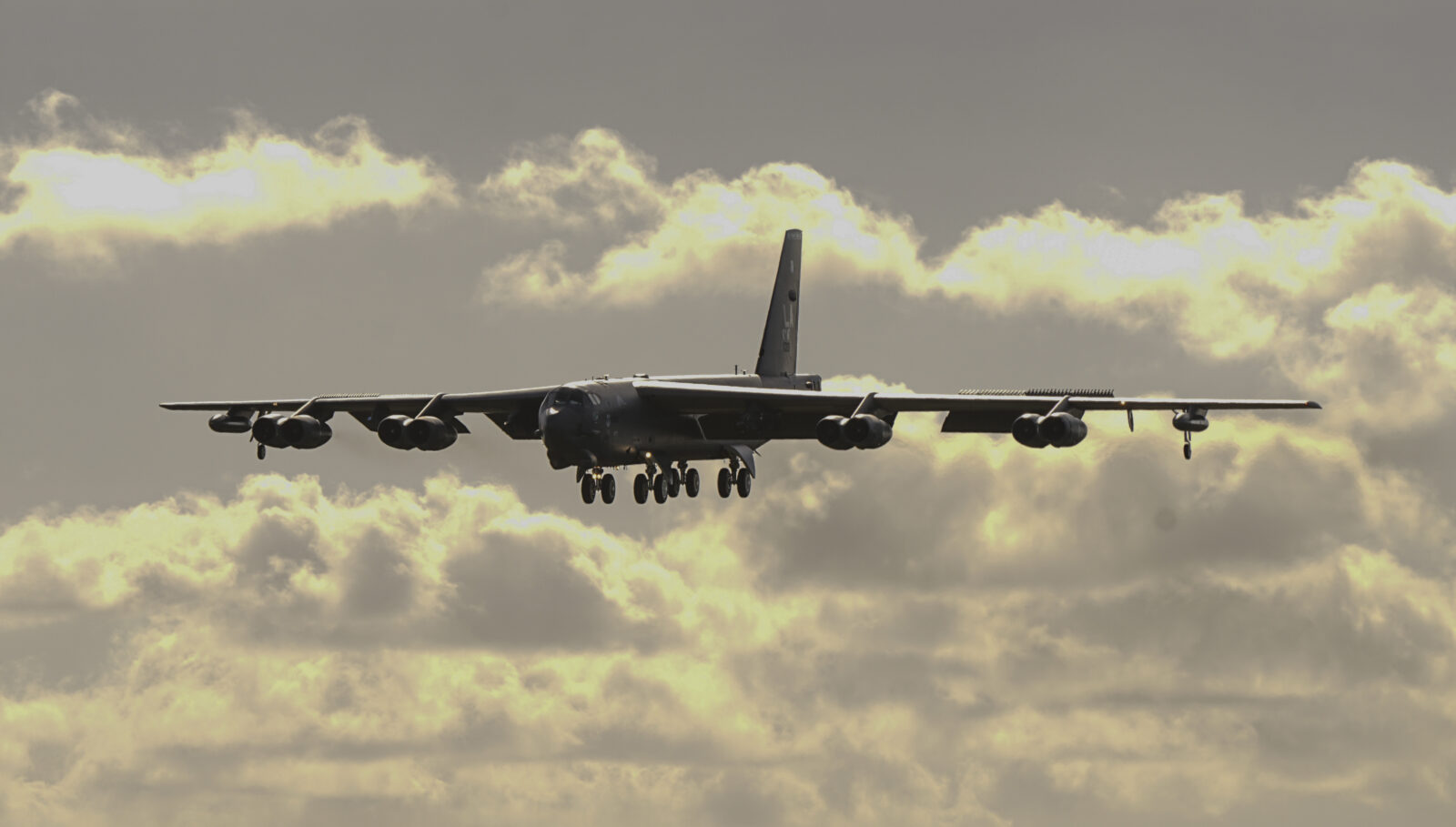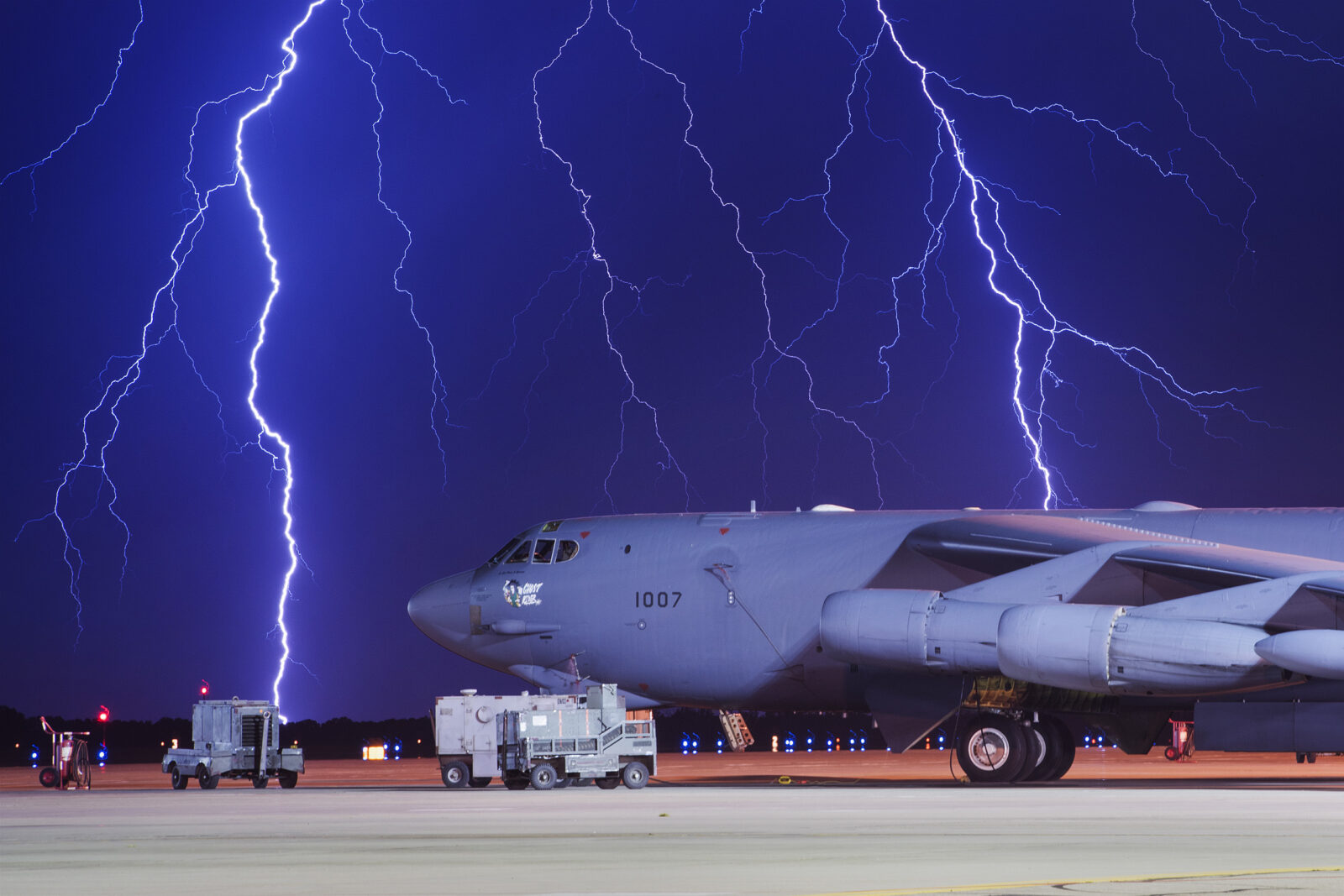All you need to know about long-serving US heavy bomber B-52H
 B-52H-Stratofortress. (Image by Tugce Atmaca/Türkiye Today)
B-52H-Stratofortress. (Image by Tugce Atmaca/Türkiye Today)
The B-52H Stratofortress is a long-range, heavy bomber used by the United States Air Force. Known for its versatility, the B-52 can perform strategic attack, close-air support, air interdiction, offensive counter-air and maritime operations.
With an operational ceiling of up to 50,000 feet (15,166.6 meters) and a speed of 650 miles per hour (Mach 0.84), the B-52 can deliver both nuclear and precision-guided conventional ordnance.
The bomber’s capability for aerial refueling allows for an extended range, only limited by crew endurance, exceeding 8,800 miles (14,080 kilometers) unrefueled.
Background and history of B-52’s
Introduced in the 1950s, the B-52 has been a key part of the U.S. strategic bomber fleet for over six decades. Boeing built a total of 744 B-52s, with the B-52H, first delivered in 1961, remaining the only active model.
The aircraft has played roles in several significant military operations, including Desert Storm, Allied Force, and Enduring Freedom. Its large payload and adaptability have ensured its continued use, with modifications keeping it operationally relevant into the 21st century.

Features and modern upgrades
The B-52 is equipped with eight Pratt & Whitney TF33-P-3/103 turbofan engines and can carry up to 70,000 pounds (31,500 kilograms) of mixed ordnance. The aircraft has undergone various technological upgrades over the years.
The Combat Network Communications Technology (CONECT) program enhanced communication and avionics capabilities, while the 1760 Internal Weapons Bay Upgrade (IWBU) increased the payload capacity by 66%. The USAF continues to explore further upgrades, including defensive laser weapons and radar systems.

Operational units and service life
As of 2024, the U.S. Air Force maintains 58 active B-52H bombers under the Second Bomb Wing at Barksdale AFB, Louisiana, and the Fifth Bomb Wing at Minot AFB, North Dakota. The Air Force Reserve Command’s 307th Bomb Wing also operates 18 of these aircraft.
The B-52 is expected to remain in service until at least 2050, reflecting its enduring value to U.S. national defense.

General characteristics of B-52H Stratofortress
| Primary function: Heavy bomber | Weight: Approximately 185,000 pounds (83,250 kilograms) | Armament: Approximately 70,000 pounds (31,500 kilograms) mixed ordnance – bombs, mines and missiles. (Modified to carry air-launched cruise missiles) |
| Contractor: Boeing Military Airplane Co. | Maximum takeoff weight: 488,000 pounds | Unit Cost: $84 million (fiscal 2012 constant dollars) |
| Power plant: Eight Pratt & Whitney engines TF33-P-3/103 turbofan | Fuel capacity: 312,197 pounds | Crew: Five (aircraft commander, pilot, radar navigator, navigator and electronic warfare officer) |
| Thrust: Each engine up to 17,000 pounds | Payload: 70,000 pounds | Initial operating capability: April 1952 |
| Wingspan: 185 feet (56.4 meters) | Speed: 650 miles per hour (Mach 0.84) | Inventory: Active force, 58 (test, 4); ANG, 0; Reserve, 18 |
| Length: 159 feet, 4 inches (48.5 meters) | Range: 8,800 miles (7,652 nautical miles) | |
| Height: 40 feet, 8 inches (12.4 meters) | Ceiling: 50,000 feet (15,151.5 meters) |



